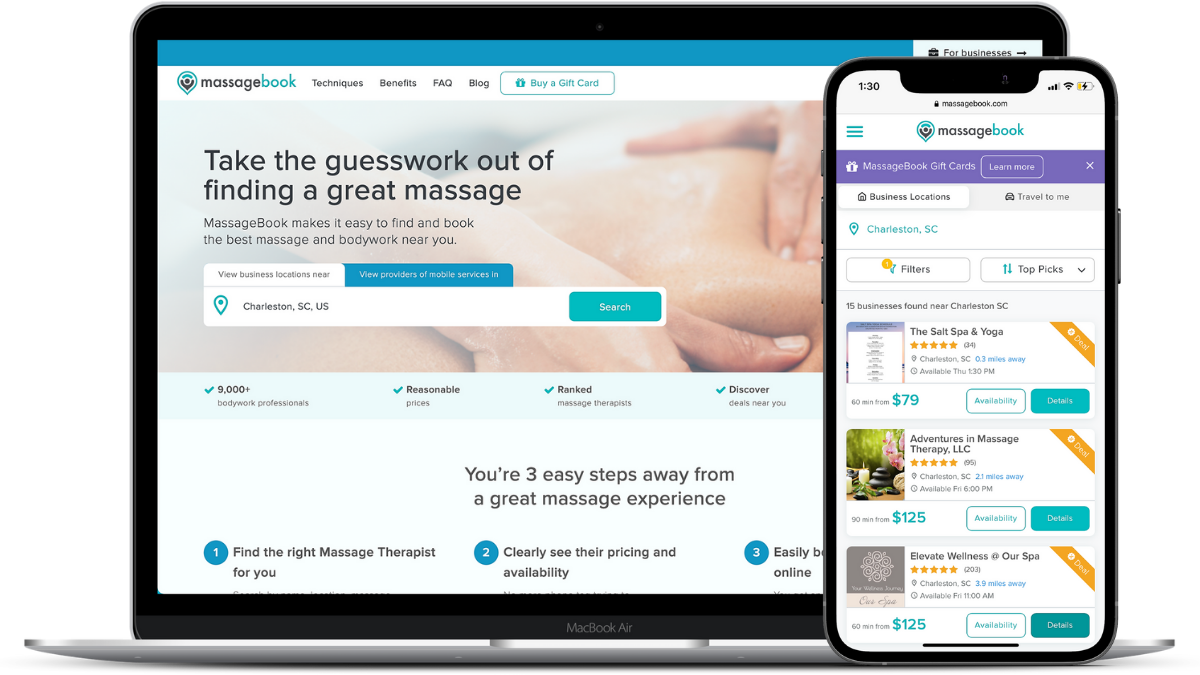1. Reflect your brand
When most people think of branding, they think about logos, color palettes, and fonts. However, that’s not all your brand is. Branding also includes verbal branding, which is the practice of using language to focus and amplify how your business creates connections. And your business’s name falls under verbal branding.
Your brand should reflect your massage practice’s mission, vision, and values and represent who you are as a practitioner and what makes you stand out from your competitors. When naming your business, think about how you want people to feel when they read it.
If you want them to feel calm, words like “tranquil” and “zen” work well. If you want to exude luxury, you can include a descriptive word like “refined,” “premier,” or “lush.” If you’re focused on helping those with injuries, you could include words like “soften” or “healing.” The possibilities are endless—you just need to determine what you want your name to communicate to your clients.
2. Make it memorable
Creating a memorable business name ensures that potential customers remember your practice when they’re ready to book an appointment. There are a few tricks you can use to achieve this:
-
Use alliteration. Alliteration, or the repetition of consonant sounds, not only makes your business’s name more sonically pleasing but also makes it easier to remember.
-
Use two words to form a new word. Some effective examples from companies include UpWork, CommunityPass, and Facebook.
-
Alternative spelling. If the name you like is fairly common, use an alternative spelling to draw attention. For instance, instead of naming your practice “Zen Spa,” you could try “Zyn Spa.” This strategy comes with a caveat: Make sure it still phonetically makes sense and is not easily mixed up with another word.
Test out the names you’ve brainstormed on your peers to see how memorable they are. Ask them how easy the name is to remember and how catchy it is, and use their feedback to help you determine the best option.
3. Use keywords
The primary function of your brand is to convert potential clients into recurring clients—it’s the cornerstone of your marketing strategy. Therefore, it may be valuable for you to incorporate keywords that your target audience will use to search for businesses like yours in your massage practice’s name.
Some keywords to keep in mind include:
- Location, including city and street
- Services, such as aromatherapy
- Commonly used massage therapy keywords
For example, you might name your practice “Bay Street Bodywork” if that’s where your practice is located.
While you don’t want your name to sound generic, having this information in your name can help potential clients find your practice more easily, both online and offline. Augment your strategically chosen name with other marketing strategies, including search engine optimization for your website and promoting your business through multiple channels to capture your audience’s attention and start your new practice off on the right foot.
Naming your massage business is just the beginning—you still have plenty to do before you’re ready to open to the public and start seeing customers. Streamline your tasks and responsibilities by investing in robust massage therapy software that will make running your practice a breeze.






.png)




